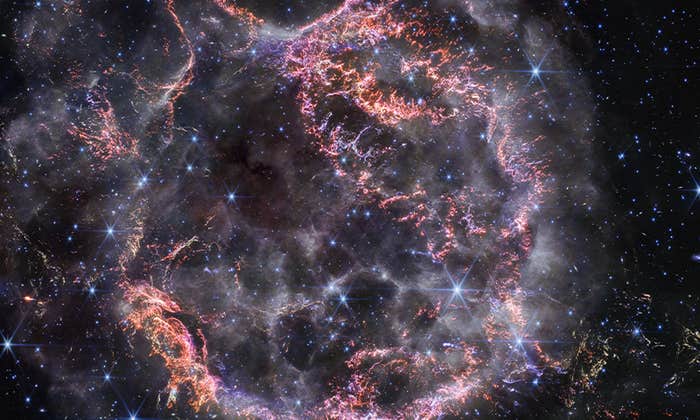When you observe a solar eclipse—with great care, of course—what you see is a thin, red crescent outlining the blocked-out Sun and, extending beyond it, a stark white mane. This is the corona, an aura millions of miles thick of superheated plasma.
It’s natural to assume the corona is cooler than the sun’s blazing surface. But in fact it gets hotter as it ranges outward. The Sun’s surface temperature is about 10,000 degrees Fahrenheit. The corona can get as hot as 5.4 million degrees Fahrenheit. This phenomenon, known as the “coronal heating problem,” “remains one of the great unsolved problems in space science,” says James A. Klimchuk, research astrophysicist at the NASA Goddard Space Flight Center.
Scientists still don’t quite understand why the corona is so toasty. But at least they accept that it is hotter. Which was not the case for a long chapter in science history. It took a little-known Swede, Hannes Alfvén, an electrical engineer by training, to convince the world of the corona’s hotness.
Around the early 1940s, there was no coronal heating problem. That’s because scientists were confident the corona’s temperature was lower, or not drastically higher, than the sun’s surface temperature. One estimate, by Swedish astronomer Bengt Edlén in 1943, was 450,000 degrees Fahrenheit. If you look up the discovery of the corona’s extraordinary heat—in reviews and textbooks from the last 50 years, even NASA’s website—you’ll generally come across only Edlén’s name.
Alfvén’s “extraordinary physical intuition,” concerning how a form of wave could move through any ionized gas, “was, for several years, condescendingly dismissed.”
But two years before Edlén made his estimate, Alfvén published a paper on the topic in an obscure Swedish journal. He theorized that the sun’s magnetic field, interacting with charged particles, plays a crucial role in the corona’s bewildering heat, overcoming presumed thermodynamic limits—that heat cannot be transported from a cool to a hot body. While his contemporaries didn’t dare to draw such a conclusion, Alfvén boldly declared that the corona is “heated to an extremely high temperature.”
A year later, Alfvén showed the existence of a special wave associated with plasmas, pioneering the field of plasma astrophysics. The waves came to be known as Alfvén waves. When Alfvén’s discovery of the waves won him the Nobel Prize, in 1970 (which he shared with a solid state physicist), an article was published in Science with the title, “Swedish Iconoclast Recognized after Many Years of Rejection and Obscurity.” The article’s author, a solar physicist named Alex Dessler, wrote that Alfvén’s “extraordinary physical intuition,” concerning how a form of wave could move through any ionized gas, “was, for several years, condescendingly dismissed.” Later, Alfvén postulated these waves caused the corona’s immense heat. Excited by perturbations in the Sun’s magnetic field, the waves propagate upwards carrying, Alfvén reasoned, 1 percent of the Sun’s radiated energy.
As discoveries become common knowledge, “often the person who first changed a paradigm gets forgotten,” wrote solar physicists Hardi Peter and Bhola N. Dwivedi, in Frontiers in Astronomy and Space Sciences, in 2014. “One such case is the discovery that the Sun’s corona is a million degrees hot.” Seven decades later, they went on, and scientists are still investigating how much these waves heat it, “first explicitly argued for by Alfvén himself.”
Indeed, in 2015, in a study published in The Astrophysical Journal, a team of researchers wrote that observations from a pair of satellite telescopes provided “direct evidence” for Alfvén’s idea, narrowing “down to unparalleled levels” the evidence for Alfvén wave heating of the corona.
Alfvén passed away in 1995, but perhaps the evidence that his waves cause the corona’s wild heat will help the iconoclast stave off obscurity.
Virat Markandeya is a freelance science writer based in Delhi. Follow him on Twitter @Viratmarkandeya.



















